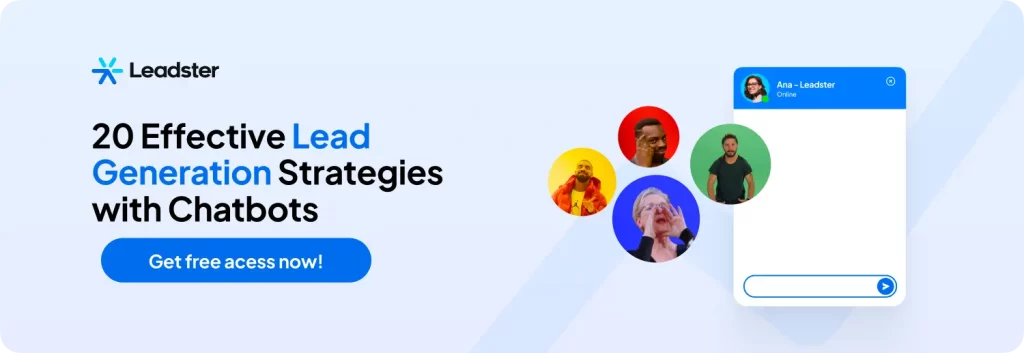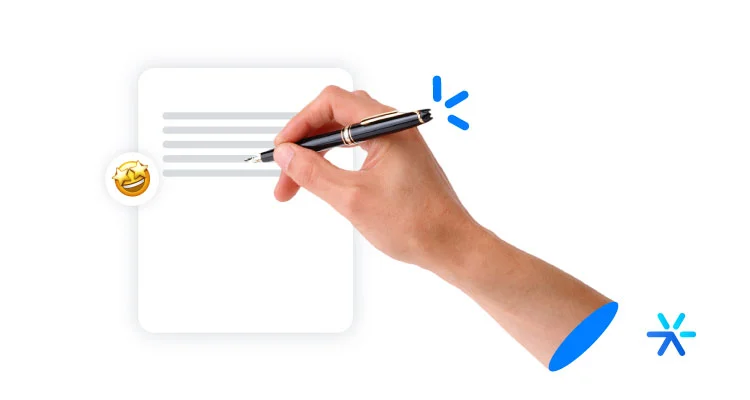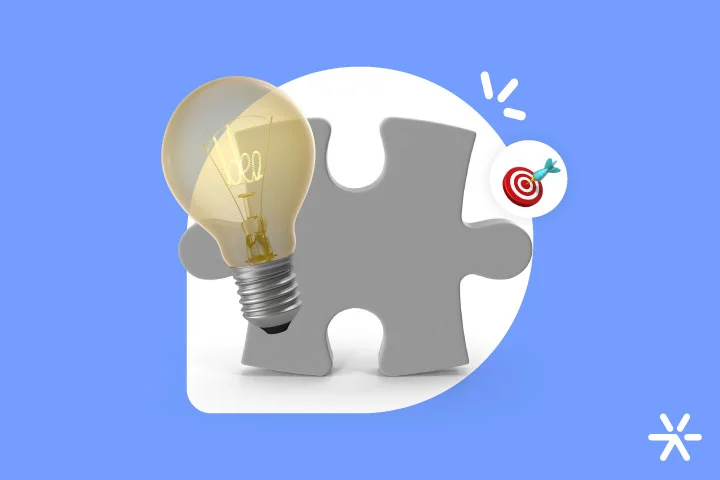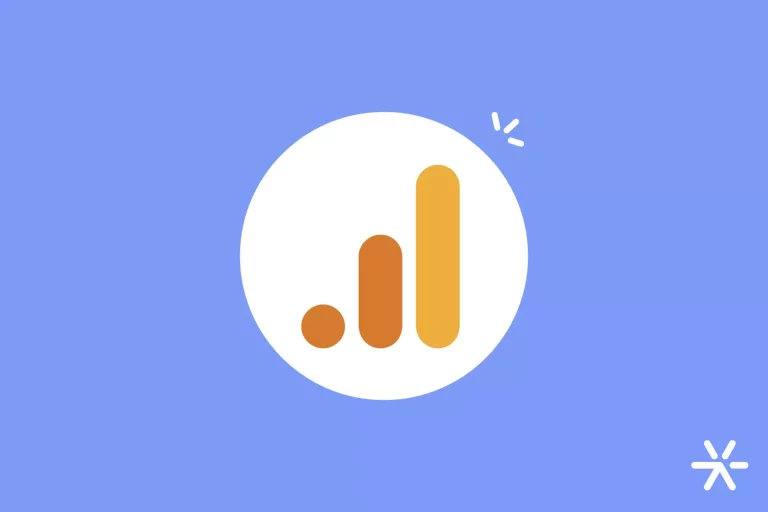Lead Conversion: Complete List of All Channels + Examples
The conversion of leads happens every day across various channels for thousands of brands throughout Brazil.
In fact, lead conversion work, at least over the last 10 years, has been one of the most important in digital marketing as a whole.
This is especially true in more specific segments like B2B. The need to have a good lead list is directly related to the sales that the brand will make.
But generating this list is complicated. One of the biggest points of doubt is which channel to use for lead conversion.
There are some recommended channels that everyone uses eventually, but there are also others that tend to be left aside.
Today, we’ll talk about these two realities. We’ll discuss two major categories of lead conversion channels: the ones that everyone uses and the ones that everyone forgets.
But first, we need to talk about the quality of your leads:
More Than Leads — Qualified Leads

We compiled data and statistics on lead generation, and one of these data points caught our attention: the biggest concern of companies today is lead generation.
This data, presented by BrightTALK, shows that the majority of companies analyzed spend more than half of their available marketing budget on lead generation.
This is because generating these leads, along with the tracking potential that digital marketing brings, ensures that companies have much better chances in their sales.
Leads can be generated through Inbound Marketing and Outbound Marketing, but the most important thing is, without a doubt, generating them and qualifying them.
But it’s in this qualification process that many people get confused. According to a study by Ascend2, also presented in this article, less than half of the companies analyzed have qualification strategies in place.
It’s important to talk about lead qualification because it’s through it that lead generation becomes more efficient.
With qualified leads, you spend less time on conversions that aren’t suitable for your brand or your sales process.
For example: you have ICPs (Ideal Customer Profiles), but you don’t only sell to them. There’s a whole range of people you can sell to, with some of them being your best customers.
Similarly, there’s a range of people who are customers you don’t want.
If you’re a mechanic specialized in exhaust systems, you don’t want to generate leads for engine rebuilding.
If you’re a vinyl record store, you don’t want to generate customers who don’t frequently listen to music.
Lead qualification is about finding ways to gather more information about a lead before approaching them or investing more time and resources into them.
This can be done in a few different ways. Let’s discuss them below:
Qualification at the Time of Conversion
This is the most common way of qualifying leads: at the moment of conversion.
In this case, the brand usually works with lead qualification questions right from the first contact.
There are two main ways to do this:
- Through a conversion form: here, the form the person is filling out to become a lead (such as a form for downloading an e-book, for example) includes specific questions that will qualify them.
- Through chatbots: brands also use chatbots as a conversion tool. In this case, you set up the flows and the questions that the chatbot asks the user.
We even have an article that covers lead qualification questions and provides several examples.
The main point here is to understand that lead qualification questions are made at the time of conversion, right?
In this case, a chatbot is always more recommended than a lead capture form.
Asking too many questions in a form creates a lot of work for the lead, while a chatbot makes this approach more personalized and conversational.
Qualification Through Nurturing Flows
Another way of qualifying leads is through the nurturing flows you create to push them along the marketing and sales funnel.
It works like this: you generate leads that might already have initial qualification, and then you qualify them further according to the company’s business objectives.
For example: you generated leads that are qualified and may become customers, right? These qualified leads are more likely to close a sale with you than unqualified leads.
But among these qualified leads, there are people who might buy more from you. Or who will buy consistently, or who will close contracts.
Extra qualification works precisely at this point. This is mainly done through marketing automation and email marketing, together with a lead scoring system.
Through this system, you assign scores that indicate the level of qualification a lead is reaching.
We have articles about these three points here on the blog. Through them, you can get a better idea of the work that needs to be done and also discover how to apply it in your company.
Check them out below:
➡️ 19 Best Marketing Automation Tools in 2025 – With Reviews!
➡️ What is Lead Scoring and How to Apply it to Optimize Sales
Qualification at the Bottom of the Funnel
We can break down these lead qualification stages within a simple funnel.
Qualification done at the time of conversion is Top of Funnel: you need to generate the lead, and deeper qualification can’t be done right away to avoid lowering your conversion rate.
When it’s done post-conversion, through nurturing flows, it’s more Middle of Funnel — meaning there’s more space to work with qualification questions, but the contact is still not direct.
There’s another type of qualification, done for leads that are already at the Bottom of the Funnel. It’s the qualification done by the sales team itself, as the marketing team is more focused on Top and Middle.
This qualification is done through the Sales Funnel, which can be separated from the Marketing Funnel to specifically address the particularities of this stage.
This work is also very important in a sales pipeline. Here, it’s the sales representative who creates qualification questions aimed at better understanding the situation and specifics of the lead.
We have an article that talks much more about this. Access it through the link below:
➡️ What is a Sales Funnel? Stages, Methods, and 9 Tools
What Are the Most Common Channels for Lead Conversion?

As we discussed at the beginning of the article, there are some channels that are more common for lead conversion and others that are a bit more underground, so to speak. 😅
The most common ones are those that we see practically every day. But here, instead of just talking about Inbound, we’ll also focus on Outbound lead generation.
This is one of the least covered topics in online articles about the best channels for lead conversion.
Usually, they focus too much on Inbound strategies and leave Outbound aside.
But the reality for most brands in Brazil is different: Outbound is extremely popular, especially in Google Ads and Meta Ads campaigns, but also in direct approaches like active prospecting.
Let’s discuss all of these more common channels now, and in the next section, we’ll talk about others that, while applied, are still somewhat overlooked.
Starting with the basics:

The “Inbound Package” for Lead Generation
By far, the most common strategy for lead generation today is the application of the “Inbound package.”
We call it a “package” because these are the most common strategies for generating leads within an Inbound strategy. Almost every brand that works with Inbound starts here.
This package includes:
- Blogs for generating leads: a blog is created, and articles are written based on good keywords. This blog attracts visitors who will be converted into leads through the next channel.
- Rich materials: advanced and more extensive materials are offered on the brand’s website and within the blog articles themselves, through banners or chatbots. Conversion happens when the reader submits their information to access the material.
- Newsletters: You offer the reader the option to subscribe to a newsletter to receive brand emails periodically. This newsletter can be advertised anywhere;
- Webinars: You offer an online event for content dissemination, and to participate, the reader must provide their email and contact information;
- Interactive Content: See the example of our character counter for ads;
- In-depth Studies: The brand generates very detailed studies about its segment and releases them in partnership with other brands. This is the case of our Lead Generation Panorama.
Inbound Marketing seeks to generate leads mainly through Content Marketing.
By producing content, you increase your brand’s visibility since you are being useful to your target audience, which is the main concern of Inbound overall.
These are the main channels for lead generation in Inbound Marketing. But there is another content-related one that is also quite popular:
Social Media for Lead Generation
Producing content on social media also has a great potential to generate leads.
And leads at various stages of the funnel, not just at the top, where people often say social media dominates.
Okay, social media is great for generating Top of Funnel leads — a feature also common to blogs and YouTube, which we will cover below — but they increase lead generation at all stages of the funnel in general.
All thanks to the recognition readers give to the content.
For example, take the case of Copfy, the course producer of Lucas Bernardes:
In this example, we see pure content with no CTA except for what’s in the bio link.
But at the same time, this type of content, combined with all the content he is generating, increases lead conversion over time by bringing more exposure to the channel.
However, there is content from Copfy itself aimed at a different type of conversion: space in the DMs. Look at this example:
The copy in the article asks the person to comment, increasing engagement, and already says that they will get in touch via DM.
In the DM, in addition to sending the material, Copfy also makes an offer for extra content, or even moves down the funnel and offers a course focused on AI right away.
The key to social media is interaction. This is the main factor for lead conversion on this channel.
We have an article published here on the blog that provides many more examples. Access it below:
➡️ Engagement on Instagram: Everything About How It Works and How to Increase It
YouTube for Lead Generation
At the same time, YouTube is also an excellent channel for generating leads.
It operates on principles quite similar to blogs that generate leads, for example, even with results coming through SEO.
YouTube is almost like Google if you look at it from that angle. For example, look at the results for the keyword “SEO on YouTube”:
Combining these three videos, and only these first three, we have 100,000 views within a year, with 70,000 of them coming in 4 months.
Looking at the statistics for this keyword on Google through Google Keyword Planner and SemRush, we notice it only has 320 monthly searches on the search engine.
That means, in 4 months, it would have around 1,300 searches on Google, while these videos brought 70,000 views.
Of course, it’s impossible to compare this variation like this: we would need the exact number of visits the top three results receive on Google.
But it’s clear that the number of views on YouTube, in this and many other cases, is very good.
In these videos, there are always CTAs for lead conversion. It’s here that the process starts to happen.
And here’s something interesting: service companies and freelancers use YouTube at every stage of the funnel.
Many of these views we saw in the examples will turn into sales solely through YouTube content, without involving any other Inbound process. In some cases, people sell to leads who haven’t even accessed the brand’s website.
Content generates leads and sales by itself in many cases. And YouTube is a great platform for that.
Free Trials to Generate Leads
One of the most common ways to generate Bottom of Funnel leads is through free trials, offered by companies that use the PLG model (Product Led Growth) as their main go-to-market strategy.
These companies are typically SaaS tools, which already naturally make the product trial process easier.
🔎 Read also: Examples of SaaS companies that generate leads — what do they do?
The idea is pretty simple: right on your website’s homepage, all efforts are directed towards getting visitors to try the product.
That is the ultimate goal, expressed through various types of CTAs.
In fact, the article linked above provides an in-depth analysis of several SaaS company websites so you can understand exactly how the process usually works.
Product trials are one of the main points that qualify a lead as a sales opportunity, or a hot lead.
And with a chatbot performing automatic lead qualification for those requesting the trial, it’s possible to generate leads that are closer to your ideal customer profile (ICP) who have already tried your product — that’s the maximum qualification.
Click this link and take a test of Leadster today to better understand how the process works.
All this potential I just described happens very quickly, but the process leading up to the test can be quite long since it might be someone testing impulsively or someone who has been following your brand for some time.
Case Studies
Another very classic way to generate leads is through case studies.
These studies work very well as social proof, showing your clients how the work has helped other clients.
This is where a large part of the Bottom of Funnel leads will be generated on your site. This area of your site is very important, as it has the greatest potential for lead conversion aside from the contact form page.
These case studies need to be linked and mentioned as much as possible throughout your content. The more, the better!
Lead Conversion with Outbound
Outbound also generates leads, but mainly through ads.
The issue is that, through active prospecting, the salesperson can also generate good leads, but these professionals are better used when they already have a lead list ready.
Both Google Ads and Meta Ads have ad objective settings focused on lead generation.
In Google Ads, these are traffic and lead generation campaigns, configured to display ads on the Google Search Network.
These campaigns are optimized with AI to ensure higher conversion in this goal.
In Meta Ads, registration ads are the best options for generating leads.
Lead Conversion Through Less Traditional Methods

In addition to the methods we’ve seen so far, there are also some others that are less commonly used — the more underground ones.
These methods are less preferred for several reasons. The main one is the complexity of execution.
Right after that, there’s also the difficulty in measuring results.
All the actions we’ve discussed here are digital marketing actions. You have full control over all the data they generate at all times.
Many actions we’ll see here don’t share this characteristic. In fact, they’re quite hard to measure in general, and you’ll understand why once we go through them.
Let’s talk about them now. And also make one thing very clear: there’s no action here, or strategy, that we don’t recommend. It all depends on your expertise and willingness to implement it.
Let’s understand everything better now:
In-person Events
In-person events are great ways to convert leads, and this conversion starts even well before the event itself.
In fact, these events are organized precisely for that purpose: to increase the conversion of the company’s leads during the event’s promotion period.
This conversion happens through event registration or booking. To participate, attendees must either buy a ticket or confirm their presence.
Now, just think: the person signed up for your event 3 months before it happens. In events like RD Summit, for example, there are people who sign up even the year before.
During this whole period, you can nurture this lead base and turn it into a customer base. You can even activate existing customers and sell even more to them.
More about this strategy below:
Leads You Already Have
In addition to working to generate a list of new leads, you can also work with a list of leads you already have but offer them a different product.
In this case, these people are leads acquired from another brand in your group or holding, or even leads who use one product but not another.
Still in the RD example: people who use the CRM but not the marketing platform.
By working with this already acquired list of leads, you can increase your company’s average ticket with a much lower CAC — it’s easier to sell to existing customers than to completely unknown people.
Community Marketing
Another very interesting way to generate leads long-term is through community marketing.
This effort aims to identify communities formed around your product or brand and become part of the conversation.
For example: seek partnerships with YouTube channels that offer tutorials about your product, participate in Reddit communities about your product, find Discord channels where your product is discussed, etc.
The real work is to be part of the community, but in some cases, it’s necessary to create the community.
This is a much harder and longer task, but not impossible. We detail the process much more in our article on this topic.
Direct Mail Marketing
Although digital marketing has gained prominence, sending physical mail to potential customers is still a tactic used by some companies.
This method can generate leads by sending personalized offers or product samples directly to potential customers’ addresses.
The complexity and cost of execution are high, and it’s difficult to track how many leads were actually converted from the campaign.
Traditional Media Advertising
Radio, TV, and print media campaigns, although not common in inbound marketing, can help increase brand awareness and attract leads.
However, these channels present challenges in measuring results, as it’s difficult to identify which leads came directly from these ads.
Even so, in specific markets, it may be a valid approach, depending on the target audience and the team’s expertise.
So, what did you think of our most commonly used channels for lead conversion? I hope we’ve been able to clarify the main points of the work.
One last invitation: you need to understand how leads are generated in your segment overall to know how to work with your brand.
To help you with that, we have our Lead Generation Panorama.
We analyzed dozens of segments to understand exactly what their main characteristics are when it comes to lead generation and digital marketing.
Access it for free by clicking on the banner below. I’ll be waiting for you, okay? Thank you for reading, and see you in the next article!








